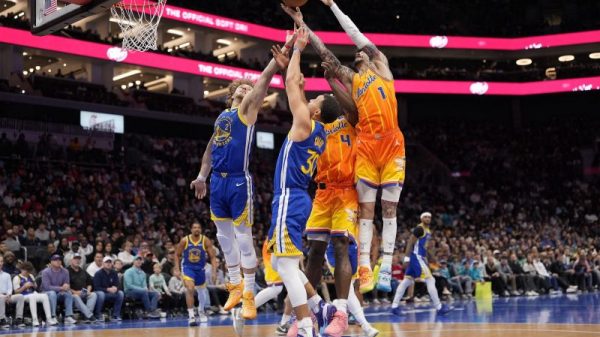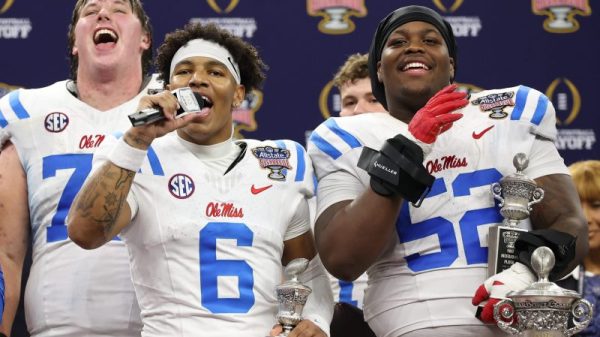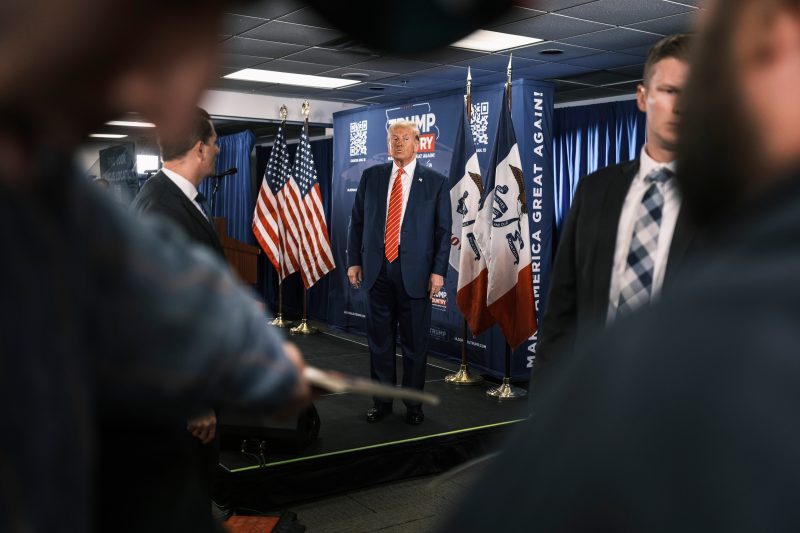Welcome to the inaugural edition of The Campaign Moment, your guide to the biggest developments in the 2024 election. I’m grateful you’re among our earliest subscribers. (Did a friend forward this? Sign up here.) Our aim is to pick out the big moments when they occur and break down what’s important.
We’re launching at a crucial juncture in the 2024 race. We should have a very good sense for how inevitable Donald Trump’s nomination is within a matter of 15 days as the first actual balloting of the GOP presidential contest begins.
If things go as the polls suggest, Trump is heading to a quick victory and a rematch with President Biden. But voters can surprise you, and this race features unprecedented dynamics.
So I thought it a good time for a reset on what the next two-plus weeks could mean. Let’s dive in.
It’s here! Republicans will caucus in Iowa on Jan. 15, followed by the first GOP presidential primary in New Hampshire on Jan. 23. There’s no question the GOP contest is Trump’s race to lose, and the former president is a strong favorite in the first two states. They could effectively end the contest for the Republican nomination.
But the margins and totals there matter for a few reasons. Let me explain.
Trump’s key 50 percent threshold
Barring a major shock, Trump will win Iowa. Barring somewhat less of a shock (but still a shock), he’ll also win New Hampshire. He leads in the former by more than 30 points and in the latter by double digits.
Assuming he wins in both places, though, getting around 50 percent or more would send a major signal. It would effectively nullify any theories about the anti-Trump vote coalescing behind an alternative if the race were whittled down to two candidates.
“It’s hard to imagine anyone can realistically make the case he’s vulnerable after that,” said one GOP strategist granted anonymity to handicap the race. “If he is in the lower 40s or 30s, he will look weak.”
DeSantis’s Iowa fate
Iowa should determine whether Florida Gov. Ron DeSantis’s campaign has any future — and perhaps more practically, whether his national ambitions beyond 2024 remain intact.
Right now the polls show that despite his heavy emphasis on the state, DeSantis is teetering on falling into third behind former United Nations ambassador Nikki Haley. And given Haley looks like the clear Trump alternative in New Hampshire, it’s tough to see how DeSantis could press on if he doesn’t at least beat her in Iowa.
“If Nikki Haley comes in second in Iowa, the main outcome is that it ends Ron DeSantis’s presidential ambitions — certainly this year, but also possibly forever,” GOP strategist Sarah Longwell said.
Haley’s must-have in New Hampshire
Iowa matters for Haley. But New Hampshire is the ballgame early on. She’s steadily closed the gap, with her closest deficit in a high-quality poll registering at 14 points.
If she somehow beats Trump or comes very close, it could significantly recast the race by puncturing Trump’s inevitability. That doesn’t mean he’d cease being the favorite — the dynamics in New Hampshire are unusually favorable for Haley — but it would set the stage for an actual contest.
At that point, it would be up to Haley to make it competitive Feb. 24 in her home state of South Carolina, where she currently trails by about 30 points.
“She needs to come in a strong third or possibly second in Iowa, come in a very close second or win New Hampshire, and then win South Carolina,” Republican pollster Whit Ayres said.
(For more on the factors influencing the 2024 campaign, see “8 questions for the start of what will be a turbulent Election 2024″ from The Post’s chief national political correspondent Dan Balz and me.)
The closing moments of a campaign invite more novel — perhaps even desperate — strategies. And Haley and DeSantis are inching toward more directly targeting Trump.
Haley is warning that the country “won’t survive” Trump’s chaos and saying Trump is “lying” about her. DeSantis argues that Trump isn’t even pro-life. DeSantis also warned that nominating Trump puts the GOP’s future “in the hands of 12 jurors” who could well convict Trump in one of his four criminal trials, and that a general election featuring Trump would be “really nasty.”
But these attacks pale compared to what Trump is saying about his opponents, including his stepped-up attacks on Haley. And even some of the above aren’t very pointed criticisms of Trump and are rather passive (i.e. Haley’s “chaos follows him”).
A major question is how much Trump’s rivals are truly willing to sacrifice their potential future political prospects — i.e. Haley becoming Trump’s VP pick and DeSantis aiming for 2028 — in the name of trying to beat him today.
There’s one more debate before the voting begins. It’s Wednesday on CNN in Des Moines, and it looks set to feature only DeSantis and Haley. (Trump is skipping it, and Chris Christie and Vivek Ramaswamy didn’t qualify.)
A two-candidate debate is very rare, and it will allow both rivals to really drive a message.
What DeSantis needs: Anything that makes him look like someone other than a candidate whose time has passed, so he can stay in the race and keep hoping Trump implodes.
What Haley needs: To stop getting in her own way by making missteps at the most inopportune time.
Iowa is and has been a big deal. But what many probably don’t know is that it gained that distinction via some sleight of hand.
The year was 1976, and Iowa Democratic Party Chairman Tom Whitney had embarked on a years-long quest to put the state’s caucuses front-and-center.
Then came the not-so-helpful results. The leading vote-getter was “uncommitted,” which finished nearly 10 points higher than then-Democratic candidate Georgia Gov. Jimmy Carter. Under the rules, Carter won only a handful of delegates, and nobody else did. Those underwhelming results threatened to undermine the whole exercise.
So as the Wall Street Journal reflected in 2020, Whitney decided then and there to fudge it. Rather than announce delegate totals according to the rules, he divvied up projected delegates based upon the vote totals. Rather than Carter winning 8 out of 29 available delegates, all 29 were announced as splitting between five candidates.
The difference might seem minor. But it allowed the Iowa hype to take off. The fact that Carter later won the nomination and the presidency played a major role in elevating Iowa.
And to hear Whitney tell it, it might have “changed the course of history” in more than one way.
“I often wonder what would have happened if we did it differently,” Whitney told the Journal. “I don’t think Jimmy Carter would have been president.”
“8 questions for the start of what will be a turbulent Election 2024” (The Washington Post)“Nikki Haley avoided creating controversy for months. Not anymore.” (The Washington Post)“Republican ads get nastier, more frequent in Iowa and New Hampshire” (The Washington Post)“Trump’s promotion of debunked election report reveals divisions in his circle” (The Washington Post)“Inside the GOP candidates’ strategies in Iowa” (Axios)“With Time Running Short, Liz Cheney Implores Republicans to Reject Trump” (The New York Times)“Trump Campaign Aims for Short Sprint to Republican Nomination” (Wall Street Journal)



























